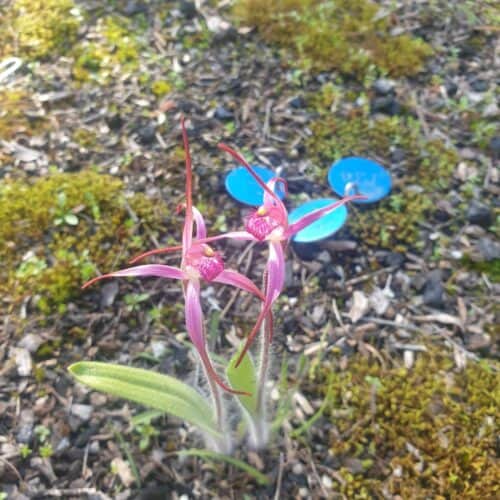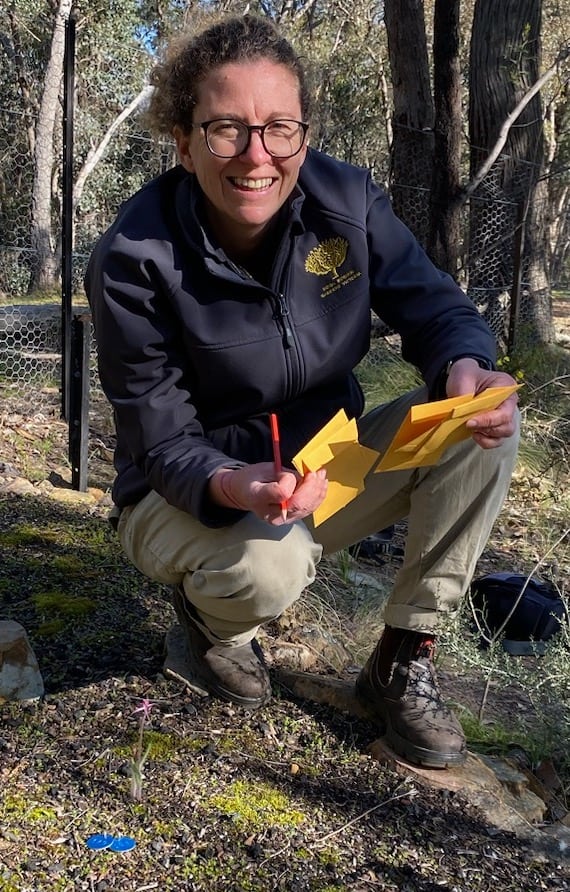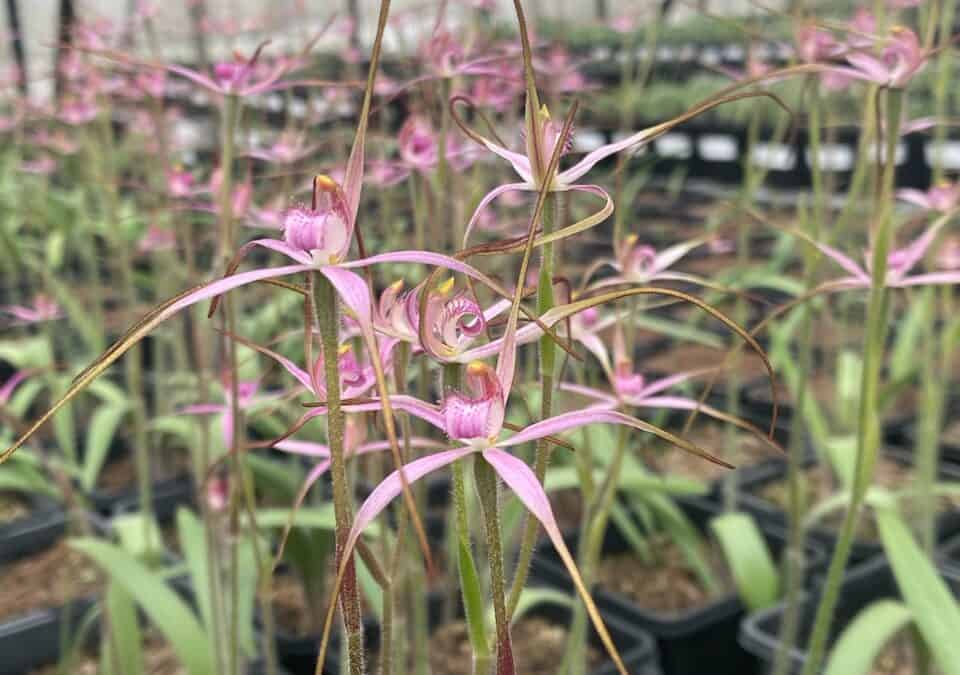This rose-pink spider orchid is critically endangered and restricted to only a few sites in the north-east suburbs of Melbourne. Royal Botanic Gardens Victoria (RBGV) scientists have been busy surveying remnant and translocated populations and collecting genetic samples as part of the ‘Preventing the extinction of Victoria’s threatened flora program’. The genetic analysis will help guide strategic cross-pollination to produce more genetically diverse seed both for long term storage and to supply new plants for further reintroductions into the wild.

Supplied: Royal Botanic Gardens Victoria
Pollination surveys are also underway, with scientists using nursery grown plants to attract the pollinator, a native bee in the genus Leioproctus. Identifying the presence of the key pollinator in potential translocation sites is a crucial step in site selection suitability, as Caladenia rosella plants will not set seed and regenerate at a site if it is absent.

Supplied: Royal Botanic Gardens Victoria
The ‘Preventing the extinction of Victoria’s threatened flora’ project is led by Royal Botanic Gardens Victoria in partnership with La Trobe University, Australian Network for Plant Conservation, DEECA, Trust for Nature, ENVITE, Bairnsdale & District Field Naturalists Club, Friends of the Grampians Gariwerd, Wimmera CMA, Nillumbik Shire, Halls Gap Botanic Gardens and the Australasian Native Orchid Society Victorian Branch.
This project is funded by the Victorian Government Department of Energy, Environment and Climate Action Nature Fund.

